You can eliminate soil pests by mixing 1-2 tablespoons of cold-pressed neem oil with 1 gallon of warm water and several drops of liquid soap for proper emulsification. Apply this concentrated solution directly to your plant’s base, ensuring complete soil saturation around the root zone. For active infestations, treat weekly; for prevention, apply every three weeks. This targets fungus gnat larvae, root aphids, and nematodes effectively. These seven proven formulas offer extensive protection strategies.
Maximum Strength Cold-Pressed Neem Oil Soil Drench Recipe
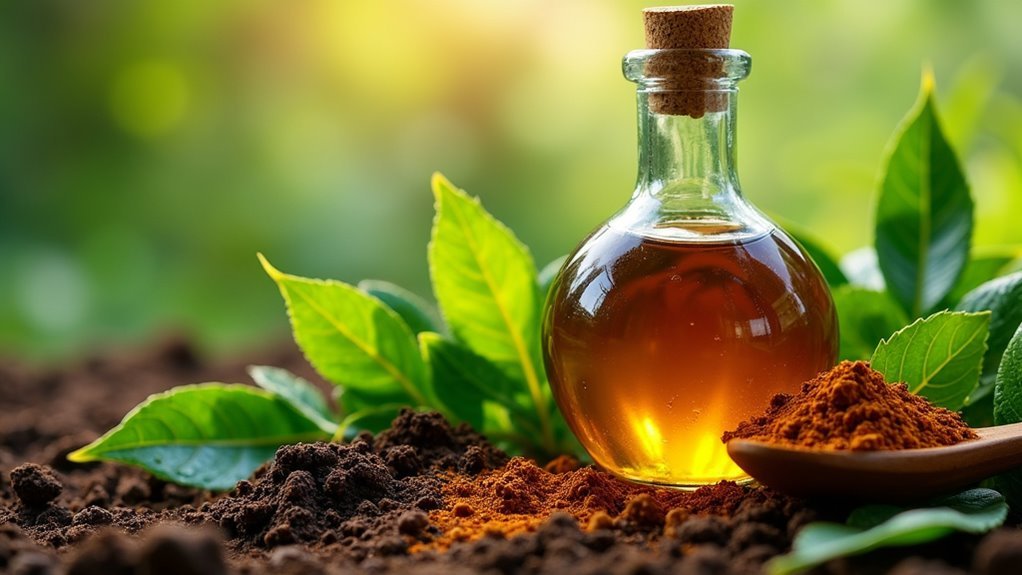
When you’re dealing with persistent soil pests, a maximum strength cold-pressed neem oil drench delivers the most potent defense for your garden.
Mix 1-2 tablespoons of cold-pressed neem oil per gallon of warm water, adding several drops of liquid soap to emulsify the solution properly.
Apply this soil drench directly around your plants’ base, guaranteeing complete saturation for effective penetration. The cold-pressed formula contains higher azadirachtin concentrations, which disrupts pest hormonal systems and provides systemic pest control when absorbed through plant roots.
For active infestations, apply weekly; use every three weeks as a preventative measure.
Always perform a patch test on sensitive species before full application to avoid adverse reactions and secure ideal results.
Emulsified Neem Oil Concentrate for Root Zone Pest Control
Building on the concentrated approach, emulsified neem oil concentrate offers superior root zone protection by guaranteeing complete oil-water integration for maximum pest control effectiveness.
Emulsified neem oil creates complete oil-water integration, delivering unmatched root zone protection and maximum pest control effectiveness for healthier plants.
You’ll mix 1-2 tablespoons of cold-pressed neem oil with one gallon of water and several drops of liquid soap to create this powerful soil drench. This emulsification process allows azadirachtin to penetrate deeper into the root zone, targeting soil-borne pests like fungus gnat larvae and root aphids systemically.
For ideal neem oil treatment results, follow this application frequency schedule:
- Prevention: Apply every three weeks
- Active infestations: Apply weekly
- Soil saturation: Confirm solution reaches entire root zone
- Plant monitoring: Check for stress or sensitivity
Always monitor plant response after each application and adjust concentrate strength accordingly, as different species react variably to root zone pest control treatments.
High-Potency Azadirachtin Soil Treatment Formula
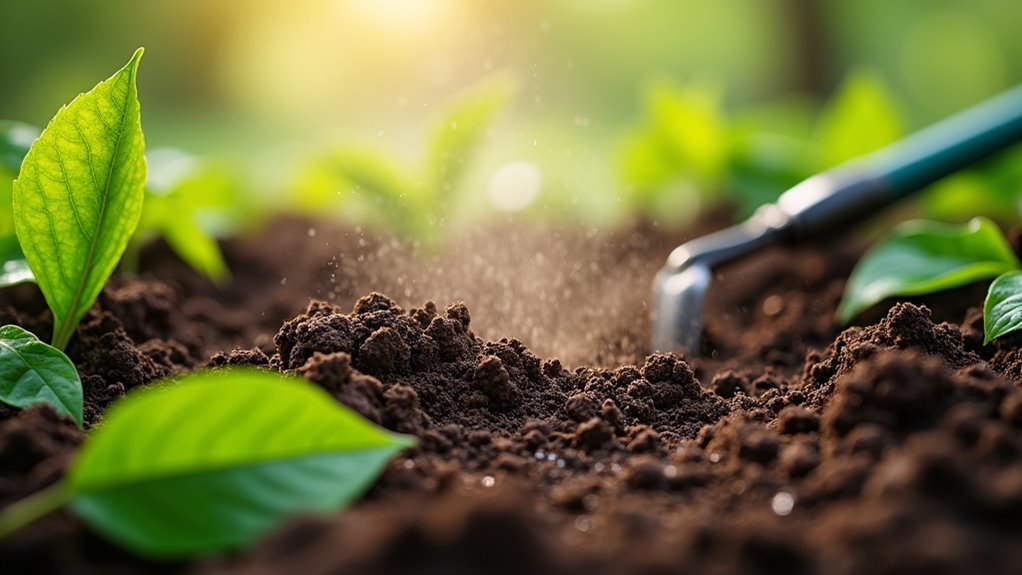
Maximum pest elimination demands a high-potency azadirachtin soil treatment that delivers concentrated systemic protection directly to your plant’s root system. You’ll combine 1-2 tablespoons of cold-pressed neem oil with liquid soap emulsifier in one gallon of water for maximum effectiveness against nematodes and larvae.
| Application Aspect | Recommendation |
|---|---|
| Timing | Early morning or late evening |
| Frequency | Every three weeks |
| Duration | Up to three weeks protection |
| Target Pests | Nematodes, larvae, soil insects |
| Benefits | Systemic action, soil health preservation |
This neem oil drench creates systemic action as azadirachtin absorbs through roots, providing internal pest defense. Regular application prevents pest infestations while maintaining plant vigor. Monitor pest populations consistently and reapply during peak infestation periods for ideal soil treatment results.
Triple-Action Neem Oil Drench for Fungus Gnat Larvae
Since fungus gnat larvae feast on organic matter and tender roots in consistently moist soil, you’ll need a targeted triple-action neem oil drench that penetrates deep into their breeding grounds.
This organic solution disrupts larval feeding patterns while preventing adult emergence.
Preparation and Application:
- Mix 1-2 tablespoons cold-pressed neem oil with 1 gallon water
- Add mild liquid soap drops for proper emulsification
- Apply directly to soil ensuring complete soil saturation
- Maintain application frequency every 7-10 days until controlled
Your neem oil drench targets the root zone where fungus gnat larvae thrive, effectively reducing populations through growth disruption.
This pest control method remains safe for beneficial organisms when used correctly, making it an excellent choice for managing infestations without environmental harm.
Concentrated Neem Soap Solution for Nematode Control
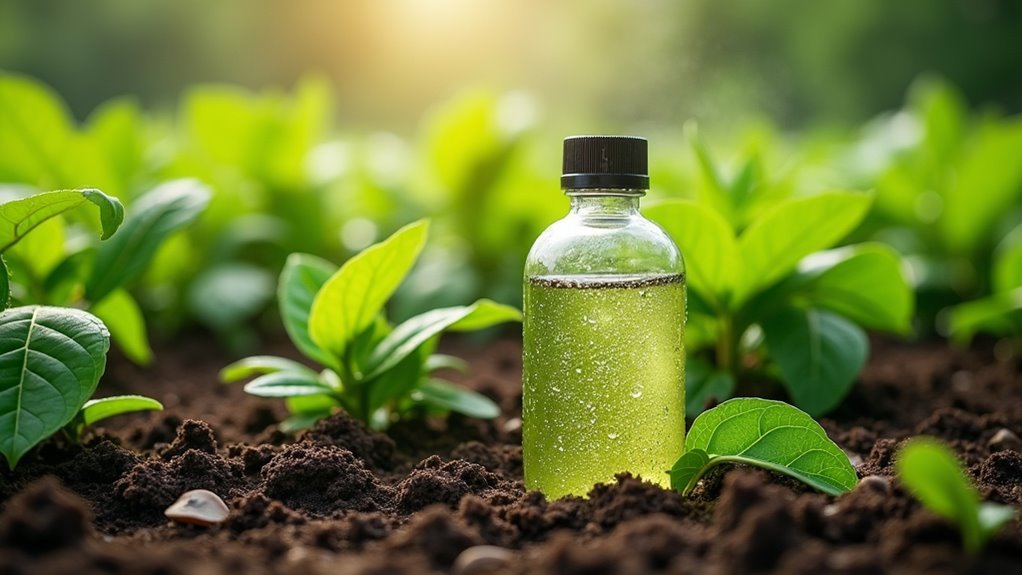
While nematodes burrow deep into soil and attack plant roots from below the surface, you can fight back with a concentrated neem soap solution that penetrates their underground habitat.
Mix 1-2 tablespoons of cold-pressed neem oil with 1-2 tablespoons of mild liquid soap per gallon of water. The azadirachtin disrupts nematode life cycles, making this organic solution highly effective for nematode control.
Apply as a soil drench, saturating the root zone thoroughly. You’ll need to reapply every 3 weeks since neem provides systemic protection for approximately three weeks.
Always test solution on a small area first, as some plants show sensitivity to neem oil. This method reduces nematode populations while protecting plant roots from further damage.
Professional-Grade Neem Oil Root Aphid Treatment
Root aphids pose a serious threat to plant health by clustering around roots and stealing essential nutrients, but you can eliminate these destructive pests with a professional-grade neem oil treatment.
This concentrated formula combines 2 tablespoons of cold-pressed neem oil with 1 gallon of water plus mild liquid soap as an emulsifier for enhanced effectiveness.
Apply as a soil drench to saturate the root zone completely, allowing systemic protection through plant absorption.
Key application guidelines include:
- Repeat treatments every 7-10 days until pest control is achieved
- Test plant response on small areas before full treatment
- Time applications during cooler periods to prevent leaf burn
- Monitor for sensitivity as some species react differently
Proper application timing protects beneficial organisms while maximizing root aphid elimination through disrupted feeding cycles.
Extended-Release Neem Soil Saturation Recipe
Beyond targeted root aphid treatments, you can establish long-term soil pest protection with an extended-release neem saturation recipe that provides weeks of continuous defense.
Mix 1-2 tablespoons of cold-pressed neem oil with a gallon of warm water and mild dish soap to emulsify solution effectively. Apply neem oil directly to soil around plant bases, ensuring complete root zone saturation to target soil-borne pests like fungus gnats and nematodes.
Saturate root zones with diluted neem oil solution to combat fungus gnats and nematodes effectively in soil-based pest management programs.
Reapply every three weeks for prevention or weekly during active pest infestation, as neem’s systemic effects persist for three weeks in soil. Always conduct a patch test on a small area before treating your entire garden.
Store undiluted neem oil in cool, dark conditions but use diluted solutions immediately for maximum effectiveness.
Frequently Asked Questions
How Do You Mix Neem Concentrate?
You’ll mix 1-2 tablespoons of cold-pressed neem oil per gallon of warm water. Add 1-2 teaspoons of mild liquid soap like Dawn to help emulsify the oil for proper mixing and application.
Can You Put Too Much Neem Oil in Soil?
Yes, you can apply too much neem oil in soil. Excessive amounts cause phytotoxicity, leading to yellowing leaves, wilting, and stunted growth. You’ll also disrupt beneficial soil microbes essential for plant health.
What Not to Mix With Neem Oil?
Don’t mix neem oil with baking soda, synthetic pesticides, or chlorinated water. Avoid combining it with high-nitrogen fertilizers or essential oils without proper knowledge, as these combinations can reduce effectiveness or damage plants.
How to Make Neem Soil Drench?
You’ll mix 1-2 tablespoons of cold-pressed neem oil per gallon of warm water with mild liquid soap. Stir thoroughly, then pour directly onto soil around plant bases, reaching the root zone.
In Summary
You’ve now got seven powerful neem recipes that’ll tackle any soil pest problem you’re facing. Don’t forget to test these concentrates on a small area first, and always apply them during cooler parts of the day. Rotate between different formulas to prevent pest resistance, and you’ll see dramatic improvements in your soil health. Keep these recipes handy—they’re your best defense against underground garden invaders.

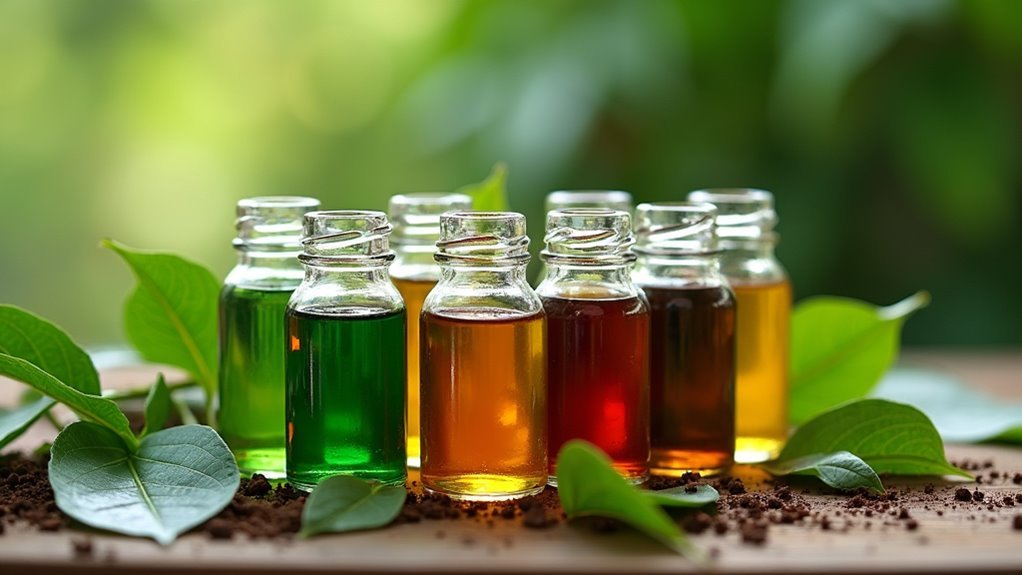

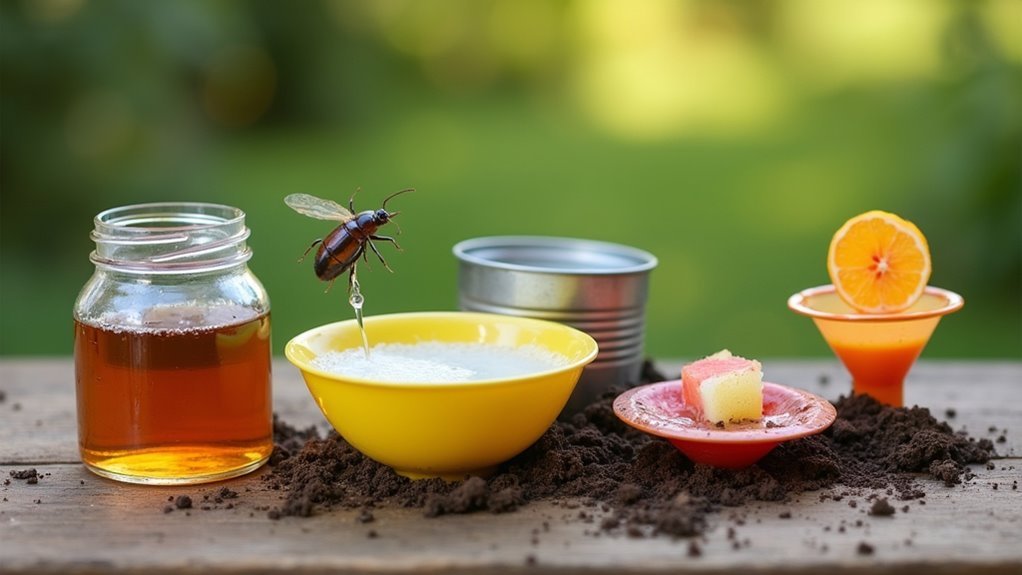
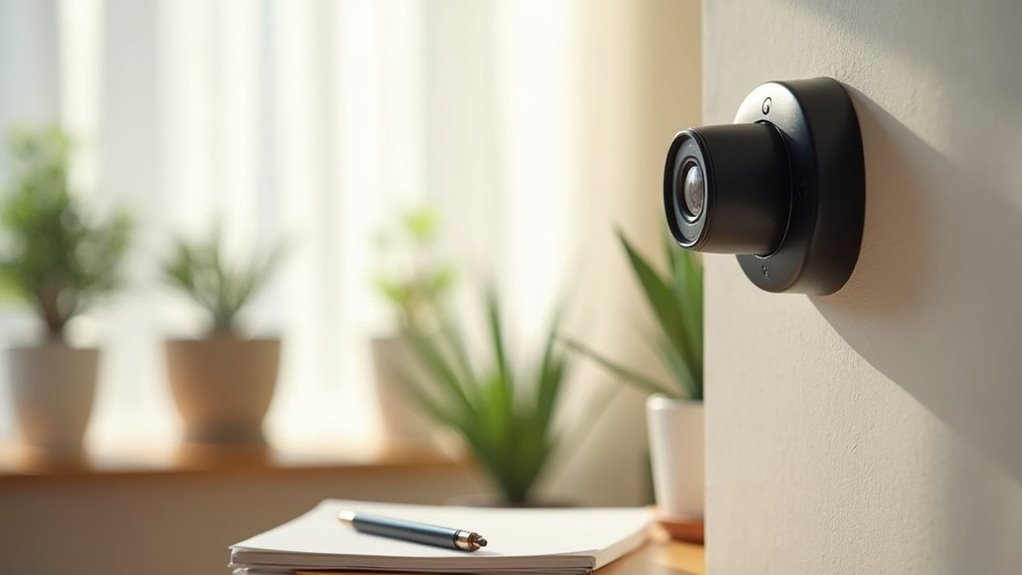
Leave a Reply